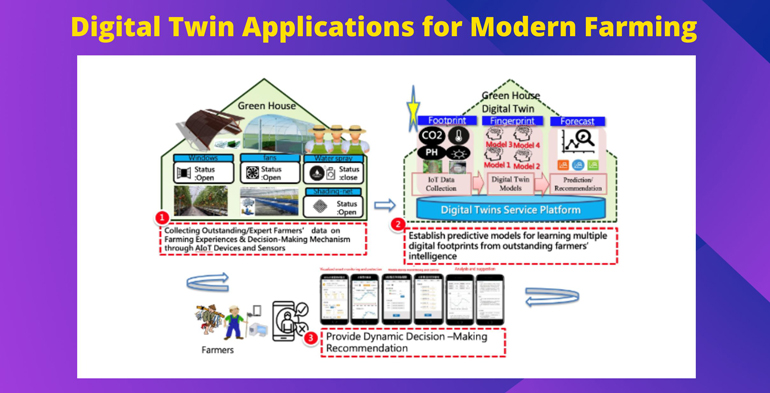
Dr. Md. Monirul Islam: Digital twin technology has been increasingly adopted in modern farming to enhance productivity, optimize resource utilization, and improve decision-making processes. Here are some applications of a digital twin for the establishment of modern farming:
1. Precision Agriculture: Digital twin technology allows farmers to create virtual representations of their agricultural systems, including crops, soil conditions, weather patterns, and machinery. By integrating real-time sensor data with the digital twin, farmers can monitor and analyze various parameters such as soil moisture, nutrient levels, and crop growth. This information enables precise and targeted actions such as optimized irrigation, fertilization, and pest control, leading to increased yields and reduced resource wastage.
2. Predictive Analytics: Digital twins can influence historical and real-time data to develop predictive models for crop growth, disease outbreaks, and yield projections. By simulating different scenarios within the digital twin, farmers can forecast the impact of various factors, such as weather patterns, pest infestations, or changes in cultivation practices. These insights enable proactive decision-making, helping farmers mitigate risks and optimize their farming strategies.
3. Resource Optimization: Digital twins enable farmers to optimize the use of resources such as water, energy, and fertilizers. By monitoring and analyzing data from sensors and connected devices, the digital twin can provide recommendations on the optimal allocation of resources based on specific crop requirements and environmental conditions. This helps reduce waste, improve efficiency, and minimize the environmental impact of farming operations.
4. Equipment Monitoring and Maintenance: Digital twin technology can be applied to monitor the performance of agricultural machinery and equipment. By creating a virtual replica of the equipment, farmers can collect real-time data on parameters such as operating conditions, fuel consumption, and maintenance requirements. This data can be used to optimize equipment usage, schedule preventive maintenance, and reduce downtime, thereby improving overall operational efficiency.
5. Decision Support Systems: Digital twins can serve as decision support systems for farmers, providing them with actionable insights and recommendations. By integrating data from multiple sources, including weather forecasts, market trends, and historical data, the digital twin can generate personalized recommendations for planting schedules, crop selection, market timing, and other critical decisions. This helps farmers make informed choices and improve their overall productivity and profitability.
6.Training and Education: Digital twin technology can be utilized for educational purposes in modern farming. It allows students and trainee farmers to gain practical experience and understanding of farming practices in a controlled and simulated environment. Digital twins can replicate various farming scenarios, enabling learners to experiment, make mistakes, and learn from them without the risk of real-world consequences.
Overall, the application of digital twin technology in modern farming can optimize resource utilization, improve productivity, minimize risks, and support.
Writer: Senior Scientist, ASRBC, ACI Seed





















